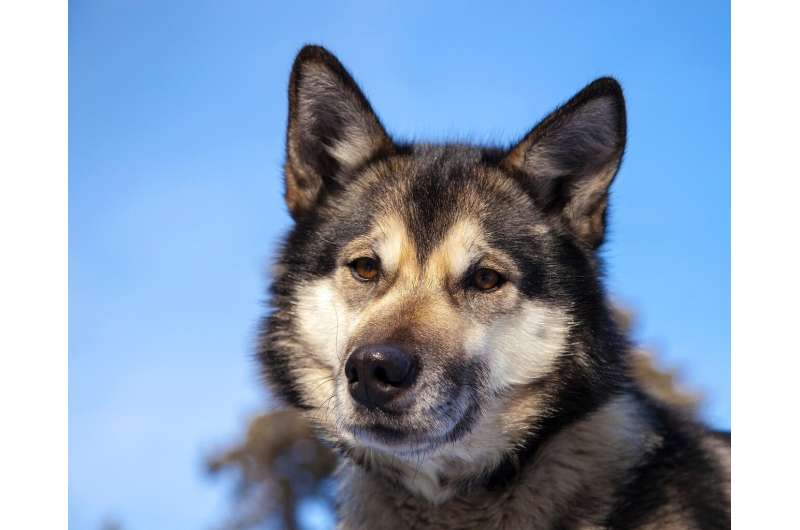Working dogs may have done less heavy lifting for humans than previously thought

The 30,000-year historical relationship between humans and dogs has been primarily defined by work, but new research indicates our four-legged companions may have had a lighter burden than we thought.
Archeologists have long thought dogs were used to pull loads in much of the circumpolar North, the Great Plains of North America and southern Europe for thousands of years, but University of Alberta Ph.D. student Katherine Latham suggests the assumptions surrounding the prevalence of that practice are flawed.
Getting an accurate picture of just how much dogs carried burdens, especially in prehistoric times, has been hampered by a lack of artifacts to offer evidence, said Latham. Many of the materials used to make harnesses and sleds have simply not survived, so archeologists have relied on examining skeletal remains to flesh out the story.
Of particular interest are signs in the spines of ancient dogs of a degenerative disease called spondylosis deformans—long believed to be caused by the stress of carrying a pack or pulling a primitive sled called a travois, said Latham.
Common in humans as well, the disease can result in the formation of bony spurs or bridges around the disc and nearby spinal joints.
"The rather conspicuous nature of this disease likely makes its presence obvious to many who work with archeological skeletal remains," said Latham.
However, in a recent study published in PLoS ONE and based on her master's thesis, Latham showed that equating the presence of the disease with working dogs is likely incorrect.
"Our results indicate this pathology is not a reliable skeletal indicator of dog transport because the disease is prevalent in both dogs and wolves, regardless of their occupational histories," she wrote.
"Numerous factors correlate with the occurrence and manifestation of this disease in canids, including age, body size, sex and inbreeding."
Noting that no comparative large-scale studies have ever been published on the occurrence of spondylosis deformans in wild dogs, transport dogs, and dogs never involved in pulling or carrying, Latham examined the presence of the disease in 136 modern non-transport dogs, 19 sled dogs and 241 wolves.
In some cases, the prevalence of the disease was even slightly higher in dogs that didn't carry loads.
"To find that the condition is common in archeological dogs, then, does not suggest they were being overworked and injured," said Robert Losey, Latham's supervisor and the leading North American expert on the relationship between dogs and humans.
"Instead, it suggests the dogs were living to old ages, which makes the condition appear very common in the archeological samples," he added.
Latham said her findings mean archeologists must re-evaluate how they read the lives of ancient dogs.
"We need to be sure that the methods we are using to identify habitual activities like load pulling are grounded in empirical evidence," she said.
Her doctoral research builds on her master's work by examining the origins and long-term history of dogsledding in coastal northern Alaska and Western Canada.
"Though dogs and dogsledding-related artifacts have been reported from archeological sites dating back some 2,000 years, there has never been a systematic analysis of these materials or dogsledding culture in this region," she said, adding she wants to identify when and where the earliest evidence of dogsledding is found, and how dogsledding gear has changed over time in this region.
More information: Katherine J. Latham et al. Spondylosis deformans as an indicator of transport activities in archaeological dogs: A systematic evaluation of current methods for assessing archaeological specimens, PLOS ONE (2019). DOI: 10.1371/journal.pone.0214575
Journal information: PLoS ONE
Provided by University of Alberta





















